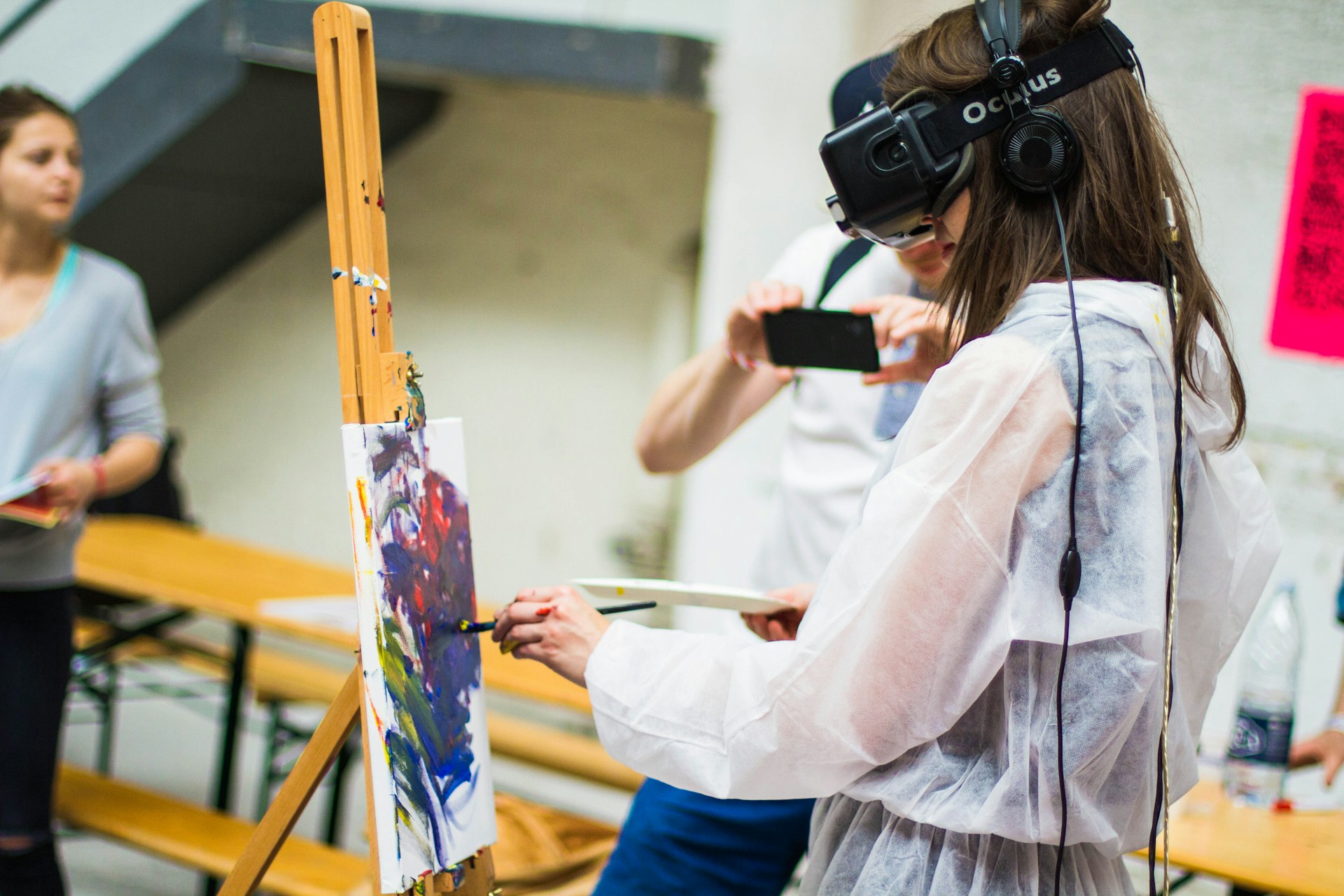VR is undoubtedly one of the most impressive and ground-breaking innovations in recent years. The potential uses and benefits of the technology go beyond just gaming, and its future potential is limitless. But, like with all new technologies, VR is still a work in progress with many drawbacks and limitations. Here’s a list of reasons why VR is amazing and some of the biggest knocks against it.
1. Virtual Travel
Nothing can compare to the real thing, but VR is about the closest you’ll get. Although certainly no substitute for real travel, VR may give you a detailed look at the places you’d like to visit in the future. From the pyramids of Egypt to the icy landscapes of Antarctica, many stunning landscapes and destinations are now accessible to millions of people who would never have been able to afford to see them up close.
2. Enhanced Gaming
VR gaming is a game changer (literally). What was once a passive albeit fun experience is now an all-encompassing and fully immersive new way of playing your favourite games. VR takes gaming to another level, offering unbridled engagement and interactivity that goes far beyond a joystick and a controller.
3. Hand-on, Life-Like Experiences
One of the most compelling cases for VR is its limitless potential for providing users with immersive experiences that border on the real thing. VR has the capacity to transport you to wherever you want to go, offering something that feels real and vivid from the comfort of your living room. With innovations emerging all the time, VR and its immense capabilities will only become more pronounced as time goes on.
4. Educational Tool
Everyone knows kids have trouble learning and paying attention, especially when they aren’t adequately engaged. Well, VR does away with all of that by making learning a fun and interactive activity. By engaging students with the subject matter at hand directly, students are able to grasp and visualize material in a manner that was never possible before, helping them to learn far more effectively.
5. Training and Simulation
In addition to being a great learning tool, VR is also the ultimate training and simulation technology. By providing a safe (yet realistic) training environment, students in a variety of fields like aviation and medicine can effectively practice high-risk procedures without the potential for any real-world consequences.
6. Remote Collaboration
As technology progresses, the necessity for real-world work interactions has increasingly diminished. With VR, people from completely different parts of the world can productively collaborate with one another in a shared virtual space, without the need to travel or commute extensively just to do their jobs or meet with potential business partners.
7. Creative Expression
Artists and designers use VR to create and explore their craft in a way that might not be feasible (or even possible) otherwise. It’s a tool that not only expands the boundaries of creation but also provides artists with a relatively cost-free and inventive way to display their art to the public on a massive scale.
8. Event Attendance
VR is a revolutionary breakthrough when it comes to experiencing live events without actually being there. Imagine sitting courtside at the finals or front row at your favourite artist’s concert — well, now you can! What would normally cost hundreds if not thousands of dollars is now only a fraction of the cost all in the comfort of your own home.
9. Social Connections
People's ability to maintain connections — no matter where they are — has certainly been bolstered by the widespread technological advancements of the 21st century. But VR has taken things to a completely new level. With the help of virtual reality, people can hang out with their friends and meet new people in wildly immersive and unique ways that were never possible before.
10. Psychological Therapy
VR has increasingly become an invaluable tool in the field of psychological therapy, particularly with people who have severe phobias, anxiety, and PTSD. As an immersive yet safe environment, therapists can provide their patients with a controlled environment in which to face and overcome their fears head-on.
1. High Costs
Any good VR setup worth its salt won’t be cheap. The expenditure of the headset itself is enough to dissuade most people; now couple that with an even more expensive computer or console to run everything and you’re looking at a hefty investment that most people just aren’t willing to make.
2. Motion Sickness
For many people, VR may simply be too much of a good thing. As fun and immersive as it is, you can only enjoy it for so long before prolonged sessions become unbearable (or even impossible) for some users, as the dissonance between what they see and feel results in deal-breaking nausea and dizziness.
3. Bulky Hardware
VR is currently in the early stages of its development and progression as a technological breakthrough, meaning there is much to be desired regarding its design. Not only are the headsets heavy and uncomfortable, but their rather bulky and unsightly nature has turned many people off from incorporating them as a more integral part of their day-to-day lives.
4. Limited Content
The cost of entry for VR is rather steep, but this problem becomes even more pronounced when you consider how limited the content selection of the medium truly is. There is no doubt an incredible selection of apps and games on the market, but there needs to be a lot more before people can fully buy into the product and what it has to offer.
5. Isolation
Although VR opens the door to all sorts of possibilities for connecting with others, there is no getting around the fact that it’s fundamentally a solitary activity. Hours spent in virtual reality means less time spent in real life and this can quickly become a problem if people let it get out of hand. Video games and social media are already addictive as it is, and VR will only exacerbate the issue.
6. Technical Issues
As impressive as it is, VR tech is still in its infancy; it’s not always smooth sailing and there are plenty of kinks to be ironed out. Technical glitches, software crashes, and compatibility issues still plague the technology. Many users are left frustrated and unsatisfied when glitches begin to disrupt the immersion of their VR experience.
7. Requires Significant Space
VR is a great way to immerse yourself in a new world and experience games in a far more active and physical way. However, this level of physicality does require a good amount of space in order to be safe. Without adequate space, many users will never experience the full potential of their VR setup.
8. Eye Strain and Fatigue
Staring at any screen for too long is bound to cause problems — especially when it’s strapped to your face! Using a VR headset for an extended period of time can cause significant eye strain and fatigue that not only limits how much time you can spend exploring virtual reality but also makes the experience generally less enjoyable.
9. Rapid Obsolescence
As a burgeoning new technology, VR is constantly evolving. All of this cutting-edge innovation (albeit good for the technology) is bad for consumers who find that the product they just paid overpaid for is constantly being outpaced by something new. Many are left wondering if they should just wait it out and see how the tech progresses before spending exorbitant amounts of money on a product that isn’t a sure thing yet.
10. Privacy Concerns
Privacy is an ever-growing concern with almost all forms of technology, especially since the dawn of smartphones and social media. With its movement tracking, eye tracking, and voice recognition, VR has raised several valid concerns about the extent to which the technology requires personal data to function. Additionally, many take umbrage with how this data is stored, kept secure, and ultimately used.



























